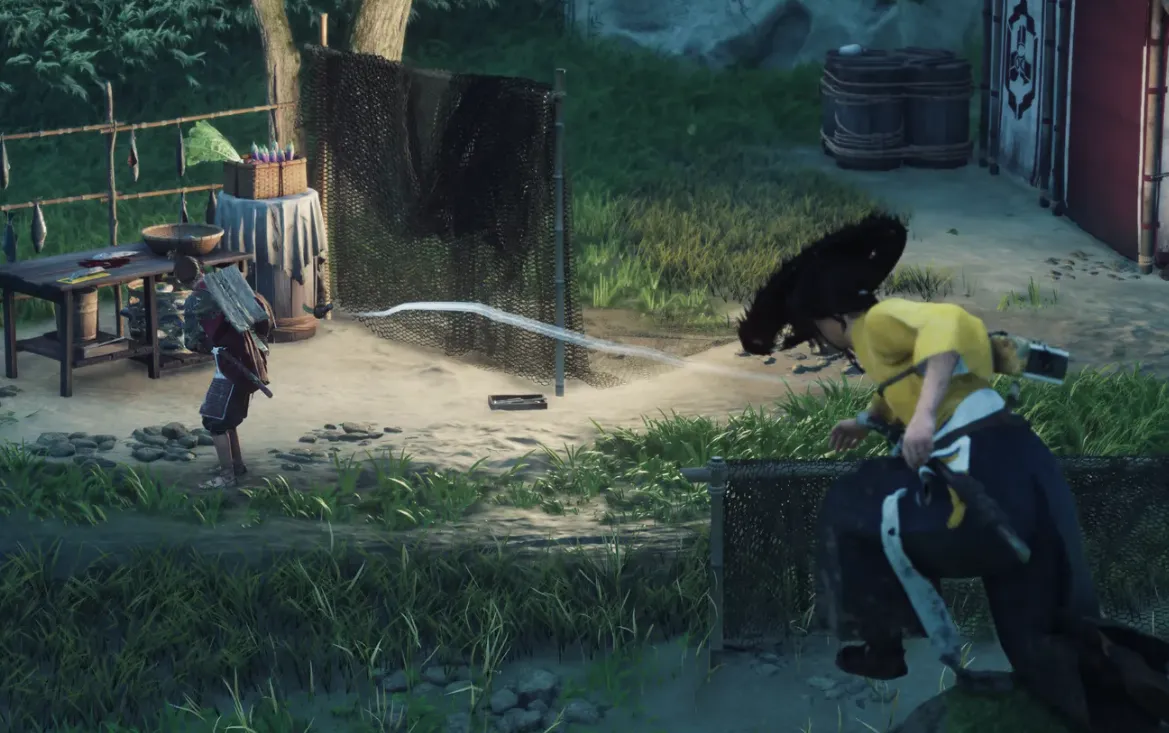Ghost of Yotei changes how stealth “awareness” works. Jin Sakai’s Focused Hearing from Ghost of Tsushima — the scan that outlined enemies through walls at the press of a button — isn’t present here. Atsu doesn’t learn a comparable mode, and there’s no skill or setting that restores it at launch. Instead, the game leans on perk-based feedback, audio cues, and classic line-of-sight stealth.
What Focused Hearing did in Tsushima
In Ghost of Tsushima, Focused Hearing was a dedicated mode triggered by a controller input. It slowed your movement and drew clear silhouettes of nearby enemies, even through structures, making it simple to plan routes, track patrols, and chain assassinations without visual contact.
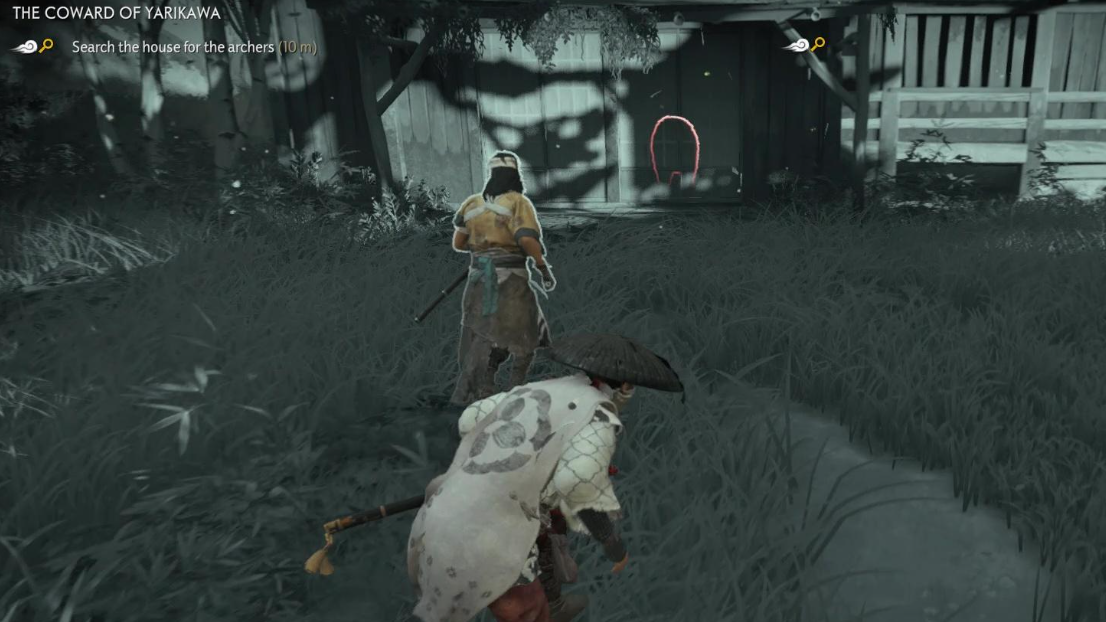
That crutch is intentionally gone in Yotei. The sequel pushes you toward reading sightlines, listening for footsteps, and using skills and distractions to create your own information.
Focused Hearing status in Ghost of Yotei
There is no Focused Hearing ability in Ghost of Yotei. You won’t unlock it through the story, find it in a skill tree, or toggle it in menus. Pressing inputs that formerly triggered the scan won’t activate anything comparable because the mechanic has been removed.
Practically, this means stealth feels more grounded but also more demanding. You’ll rely on visibility, spacing, and perks that surface just enough data to make informed moves.
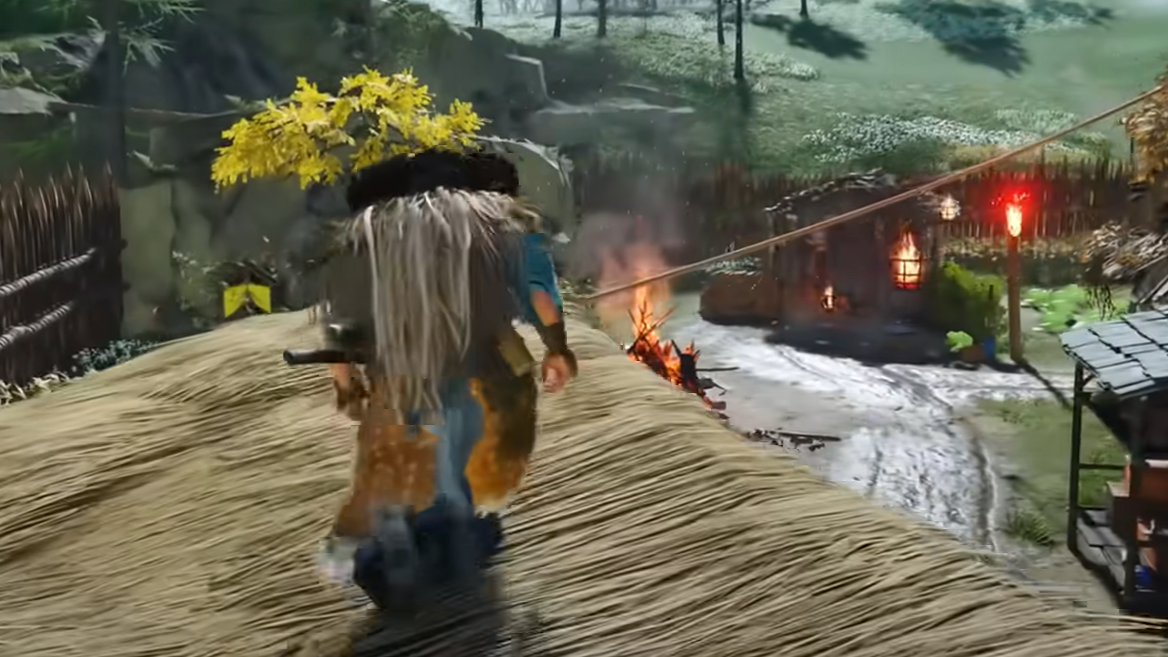
Stealth awareness now comes from skills and smart setup
Atsu’s skill trees offer targeted cues and tools that replace broad “x-ray vision” with situational insight. A few early unlocks do the most to rebuild confidence during infiltration:
- Killer’s Instinct: Adds a flashing aura when a target is being watched, warning that their death will alert others. It doesn’t reveal entire patrols, but it prevents the classic cascade of alarms.
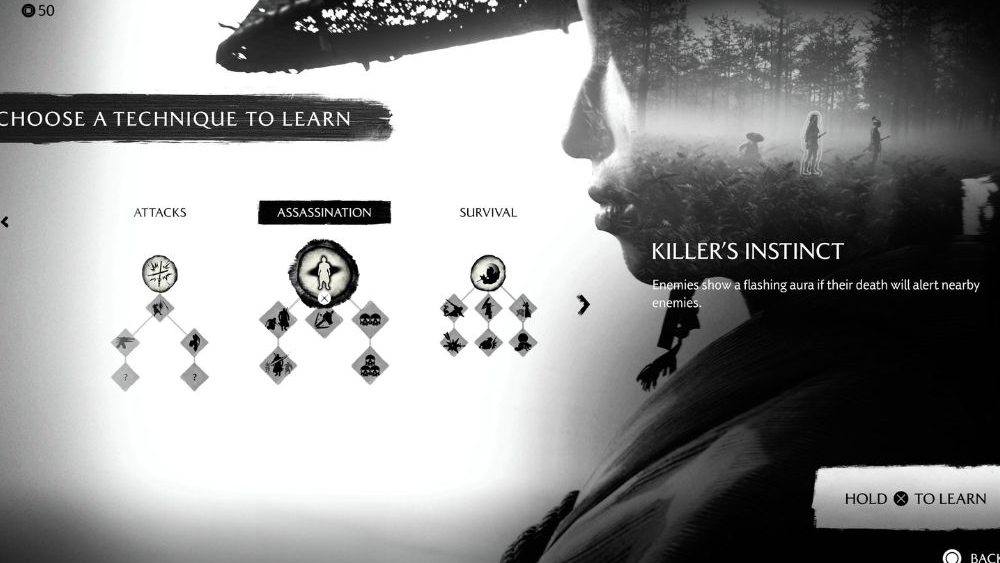
- Chain Assassination: Lets you eliminate two enemies in quick succession. Paired with Killer’s Instinct, it’s the clean answer to side-by-side sentries without a global scan.
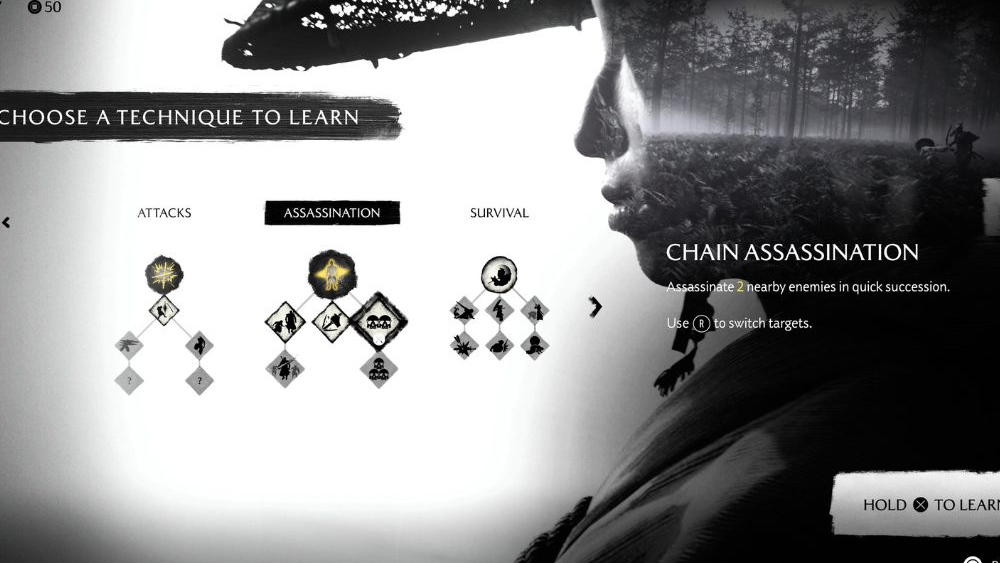
- Brute Assassination: Enables stealth takedowns on large Brute enemies that would otherwise force a brawl. It keeps a quiet run from collapsing late.
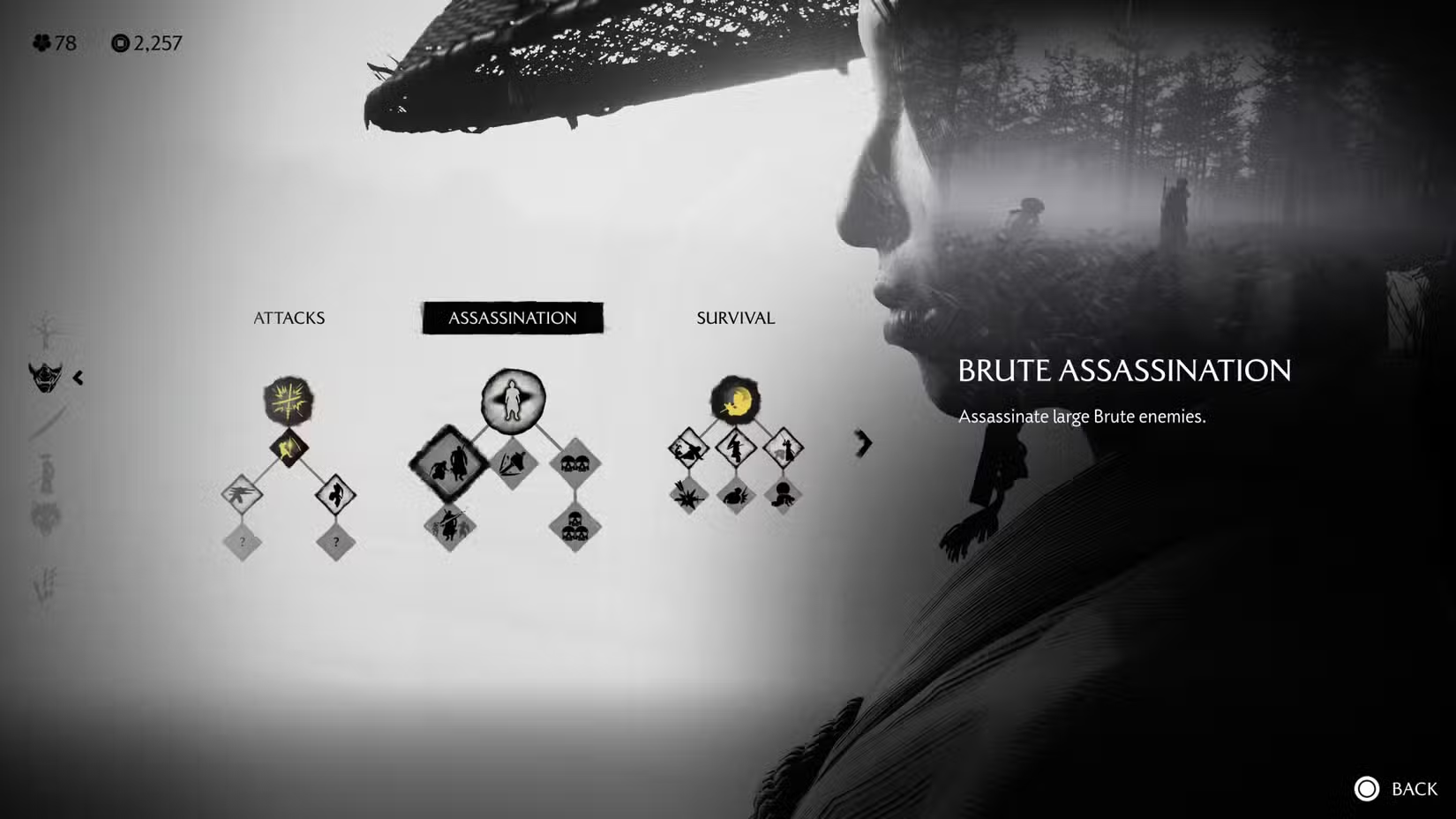
- Concentration: Slows time while aiming ranged weapons. This won’t mark foes, but it buys you clarity to pick safe headshots or interrupt a lookout mid-call.
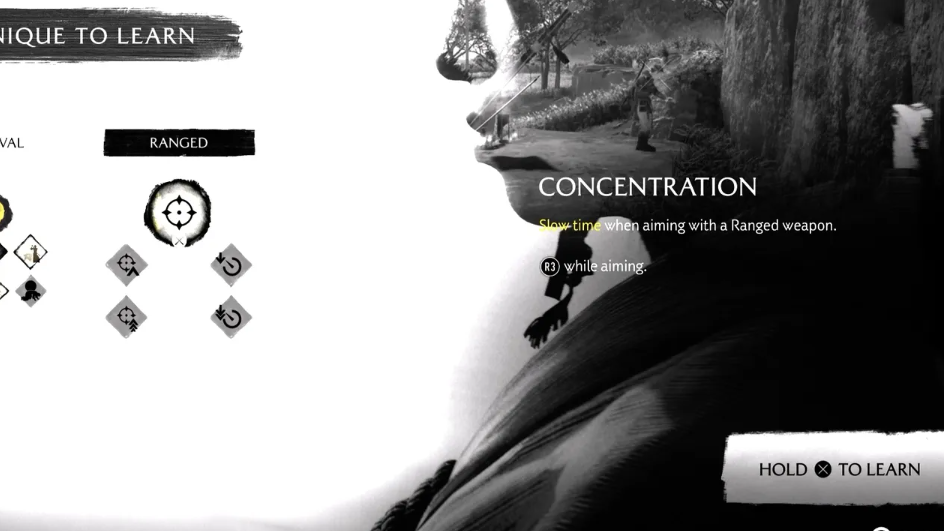
Distractions and soft tracking
Without a scan, distractions take on a new role. Tossables like sake bottles pull a guard to investigate and apply a visible highlight to the responder, letting you maintain a loose track on their movement even through light cover. Used deliberately, this acts as a precision “ping” — not a full wall outline, but enough to set a flank, return to cover, or line up a silent takedown as they turn away.
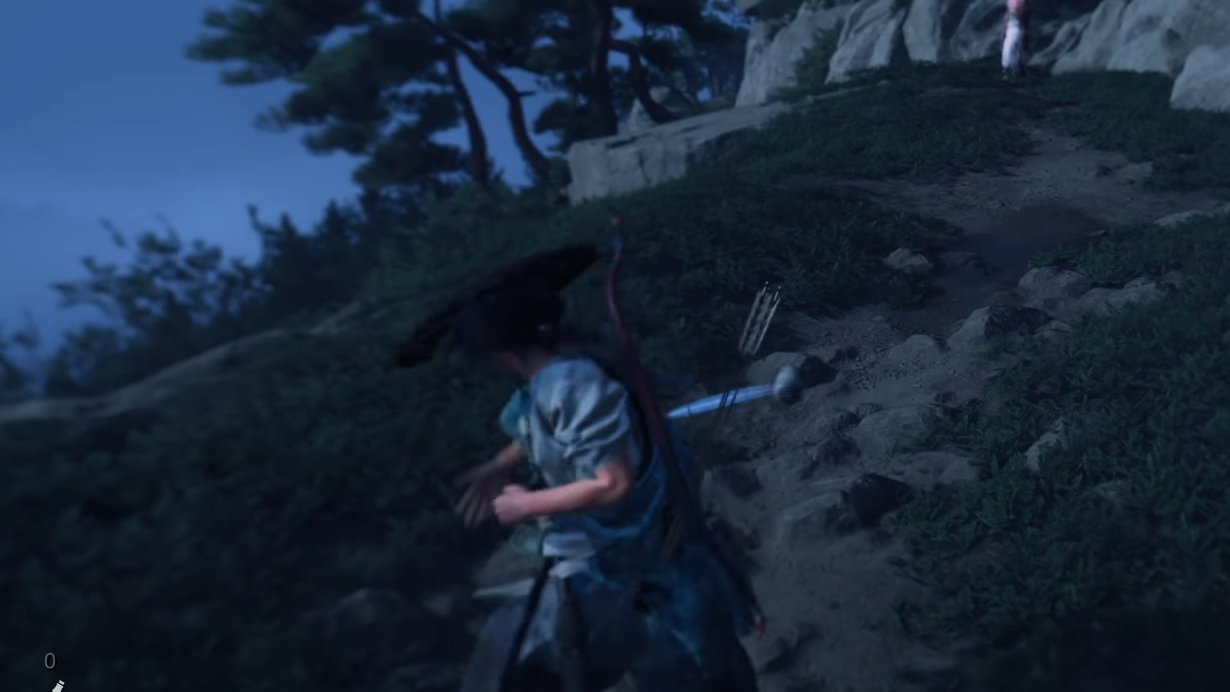
Combine this with simple patrol reading: count beats between waypoints, watch head turns, and move on diagonals rather than straight lines to keep out of cone vision.
Loadouts that support quiet runs
Ghost of Yotei adds three gear loadout slots from the start, making it easy to keep a dedicated stealth build. Slot your stealth-leaning armor and charms, then map a combat set to a second slot and a photo-ready set to a third. Swapping before you breach a camp ensures your detection thresholds, noise profile, and assassination windows are where you expect them to be — no menu digging mid-approach.
Combat systems that influence stealth decisions
Even when you’re sneaking, a few headline combat changes shape how you plan:
- Disarming Attacks: Enemies can knock your weapon away with yellow-tinted swings. If a stealth slip forces a fight, prioritize spacing and recovery; your own disarm (unlocked later via Onryo’s Strike) can invert the advantage.
- Roaming Ronin and world traps: As notoriety rises, overworld ambushes and traps become more common. Approach outposts with an eye toward entry paths that avoid trip hazards and choke points that can flip an infiltration into a messy skirmish.
Old vs. new at a glance
| Stealth element | Ghost of Tsushima | Ghost of Yotei |
|---|---|---|
| Enemy scan | Focused Hearing outlines foes through walls | No scan; rely on sightlines, audio, and perks |
| “Is it safe to kill?” cue | Infer from patrol visibility | Killer’s Instinct shows a flashing aura when watched |
| Multi-stealth kill | Chain assassination variants | Chain Assassination (2 targets) via skills |
| Brute stealth takedowns | Often forced into combat | Brute Assassination enables silent kills on large foes |
| Ranged “breathing room” | Bow timing and positioning | Concentration slows time while aiming |
| Loadouts | Added post-launch, off by default | Three slots available from the start |
How to adapt if you relied on Focused Hearing
- Unlock Killer’s Instinct first to stop accidental alerts; follow with Chain Assassination and Brute Assassination to keep momentum.
- Use distractions to “tag” a single guard and control their path, then reposition while they move.
- Create a stealth loadout in one of the three gear slots and swap before each infiltration.
- Lean on Concentration for precise ranged openers or emergency interruptions without exposing your position.
The net effect is a stealth loop that’s less about toggling a scan and more about building a toolkit that surfaces just enough information when you need it. If you loved the old sonar-style clarity, the change will be noticeable. Give the perk cues and throwables a few encampments, and you’ll find they replace broad outlines with cleaner, more deliberate control.

